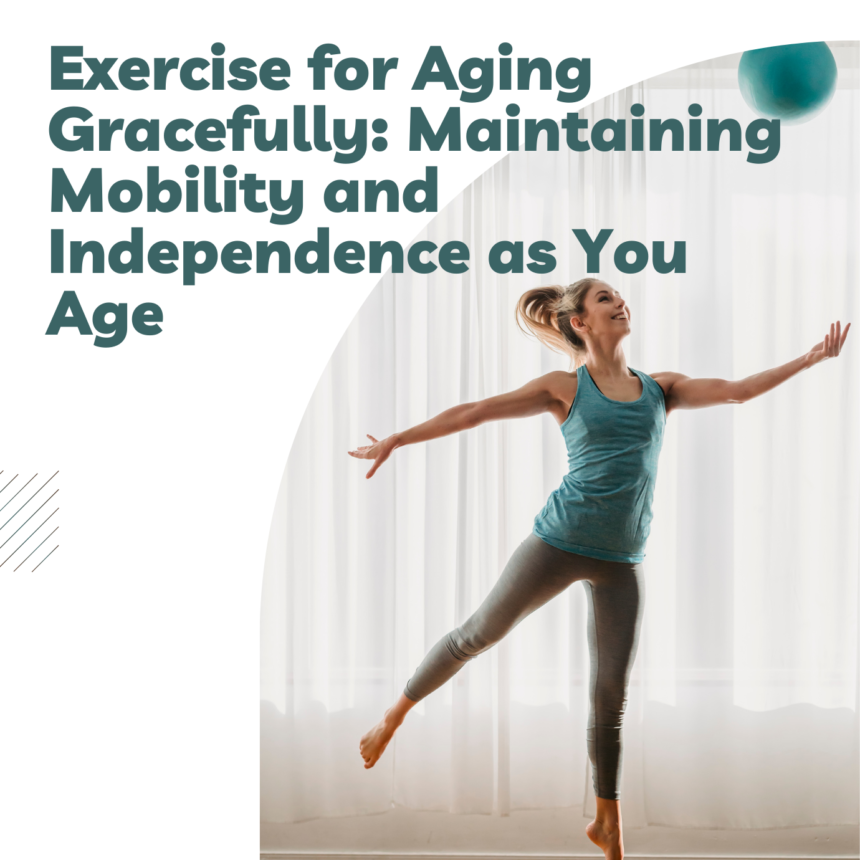Exercise plays a crucial role in aging gracefully, maintaining mobility, and preserving independence as you age. Regular physical activity can help manage and prevent age-related health conditions, improve balance and coordination, and enhance overall quality of life. Here’s how exercise can support graceful aging:
1. Maintaining Muscle Mass and Strength: As we age, muscle mass tends to decline. Engaging in regular strength training exercises, such as lifting weights or using resistance bands, helps preserve muscle mass, increase strength, and improve overall physical function.
2. Enhancing Bone Health: Aging increases the risk of osteoporosis and fractures. Weight-bearing exercises, such as walking, jogging, or dancing, and resistance exercises help strengthen bones and reduce the risk of osteoporosis by stimulating bone growth and improving bone density.
3. Improving Balance and Stability: Falls are a common concern among older adults. Regular exercise, particularly activities that improve balance and stability, such as tai chi or yoga, can help reduce the risk of falls and improve confidence in movement.
4. Maintaining Joint Health and Flexibility: Regular physical activity helps keep joints mobile and flexible. Exercises that promote joint mobility, such as gentle stretching, yoga, or swimming, can help reduce stiffness, improve range of motion, and alleviate joint discomfort.
5. Managing Weight and Body Composition: Regular exercise supports weight management by burning calories, increasing metabolism, and preserving lean muscle mass. Maintaining a healthy weight reduces the risk of various health conditions, including heart disease, diabetes, and joint problems.
6. Cardiovascular Health: Engaging in aerobic exercises, such as brisk walking, swimming, or cycling, helps maintain cardiovascular health. Regular cardiovascular exercise improves heart and lung function, reduces the risk of heart disease, and enhances overall endurance and stamina.
7. Cognitive Function: Exercise has been shown to benefit cognitive function and reduce the risk of cognitive decline. Physical activity improves blood flow to the brain, promotes the growth of new brain cells, and enhances cognitive abilities, memory, and attention.
8. Mood and Mental Health: Regular exercise promotes mental well-being by reducing symptoms of anxiety and depression and improving overall mood. It releases endorphins, which are natural mood-boosting chemicals in the brain, and provides a sense of accomplishment and fulfillment.
9. Social Engagement: Participating in group exercise classes or activities provides opportunities for social interaction and connection, which are essential for emotional well-being and combating feelings of isolation or loneliness.
10. Adaptability and Personalization: As you age, it’s important to adapt your exercise routine to meet your individual needs and abilities. Consult with a healthcare professional or qualified fitness trainer to develop a safe and effective exercise program tailored to your specific goals and limitations.
Remember to start slowly and gradually increase the intensity and duration of your exercise routine. Listen to your body, rest when needed, and choose activities that you enjoy. It’s never too late to start incorporating exercise into your daily routine to support graceful aging and maintain your mobility, independence, and overall well-being.
